Artist impression of W2246-0526, the most luminous known galaxy, and three companion galaxies. New observations with the Atacama Large Millimeter/submillimeter Array (ALMA) reveal distinct streamers of material being pulled from the three smaller galaxies and flowing into the more massive galaxy, which was discovered in 2015 by NASA’s space-based Wide-field Infrared Survey Explorer (WISE). It is by no means the largest or most massive galaxy we know of, but it is unrivaled in its brightness, emitting as much infrared light as 350 trillion Suns.
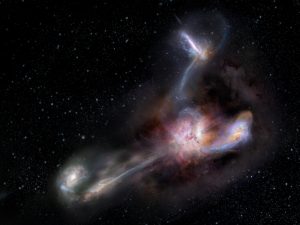
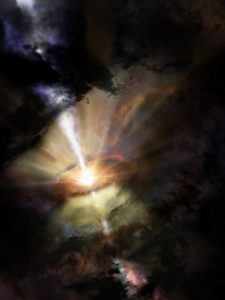
Inflow, Outflow Cycle of Gas Near Black Hole
Artist impression of Abell 2597 showing the central supermassive black hole expelling cold, molecular gas — like the pump of a giant galactic fountain. Recent data suggests that the expelled gas will eventually fall back towards the black hole, restarting the cycle.
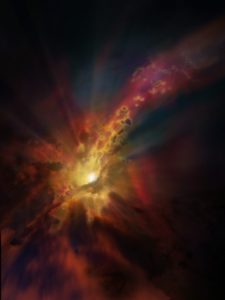
Outflows in Star-Forming Galaxies
Artist impression of an outflow of molecular gas from an active star-forming galaxy.
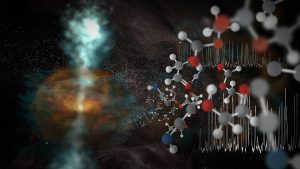
ALMA’s Highest-Frequency Capabilities
A team of scientists using the highest-frequency capabilities of the Atacama Large Millimeter/submillimeter Array (ALMA) has uncovered jets of warm water vapor streaming away from a newly forming star. The researchers also detected the “fingerprints” of an astonishing assortment of molecules near this stellar nursery. These two discoveries, made possible by ALMA’s highest-frequency capabilities, are depicted here in this artists impression.
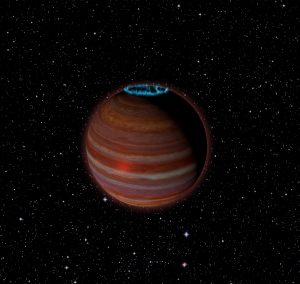
The Boundary Between Giant Planet and Brown Dwarf
Artist’s conception of SIMP J01365663+0933473, an object with 12.7 times the mass of Jupiter, but a magnetic field 200 times more powerful than Jupiter’s. This object is 20 light-years from Earth.
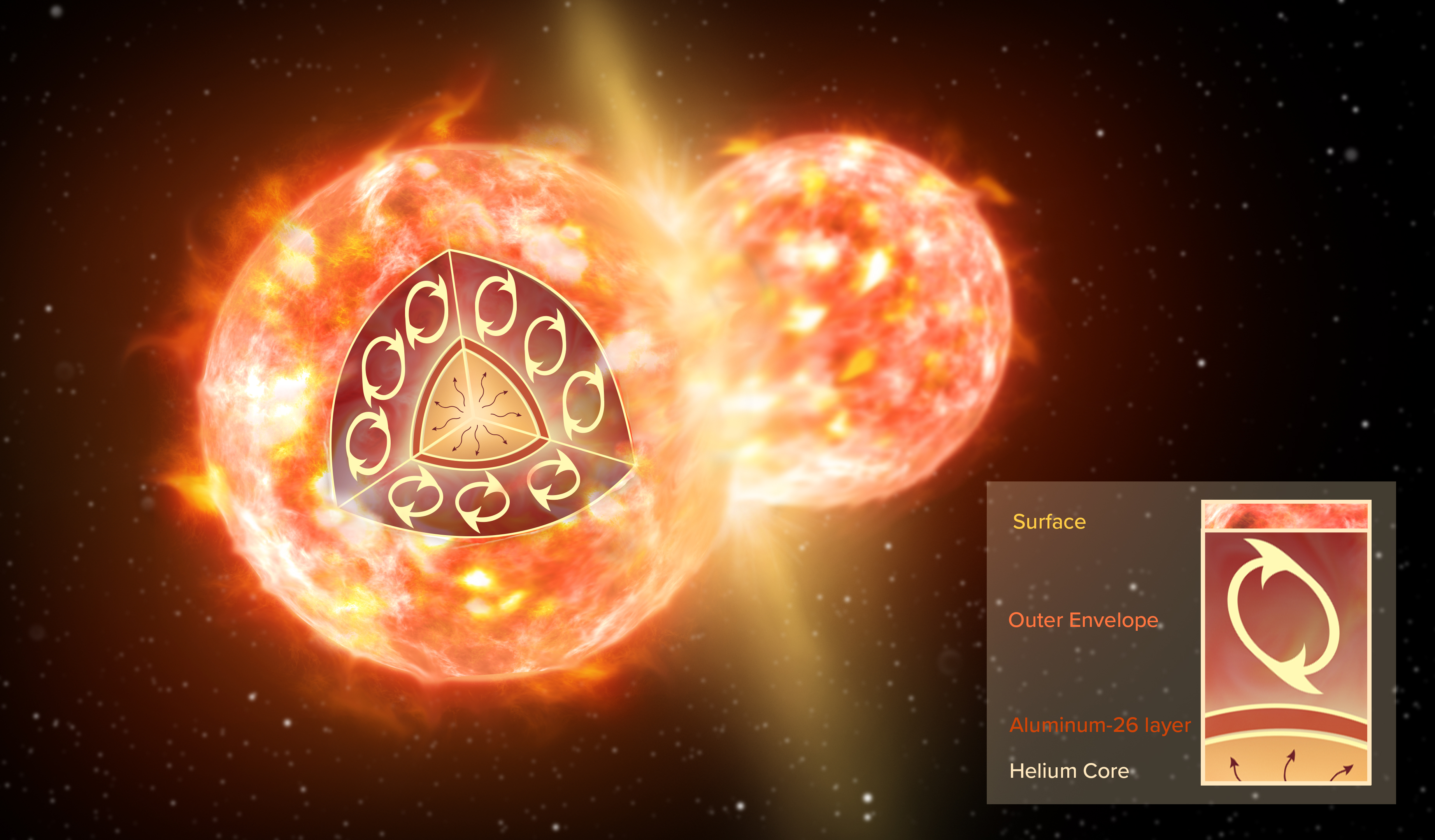
Artist Impression of CK Vul
Artist impression of the collision of two stars, like the ones that formed CK Vul. The inset illustrates the inner structure of one red giant before the merger. A thin layer of 26-aluminum (brown) surrounds a helium core. An extended convective envelope (not to scale), which forms the outermost layer of the star, can mix material from inside the star to the surface, but it never reaches deep enough to dredge 26-aluminum up to the surface. Only a collision with another star can disperse 26-aluminum.





